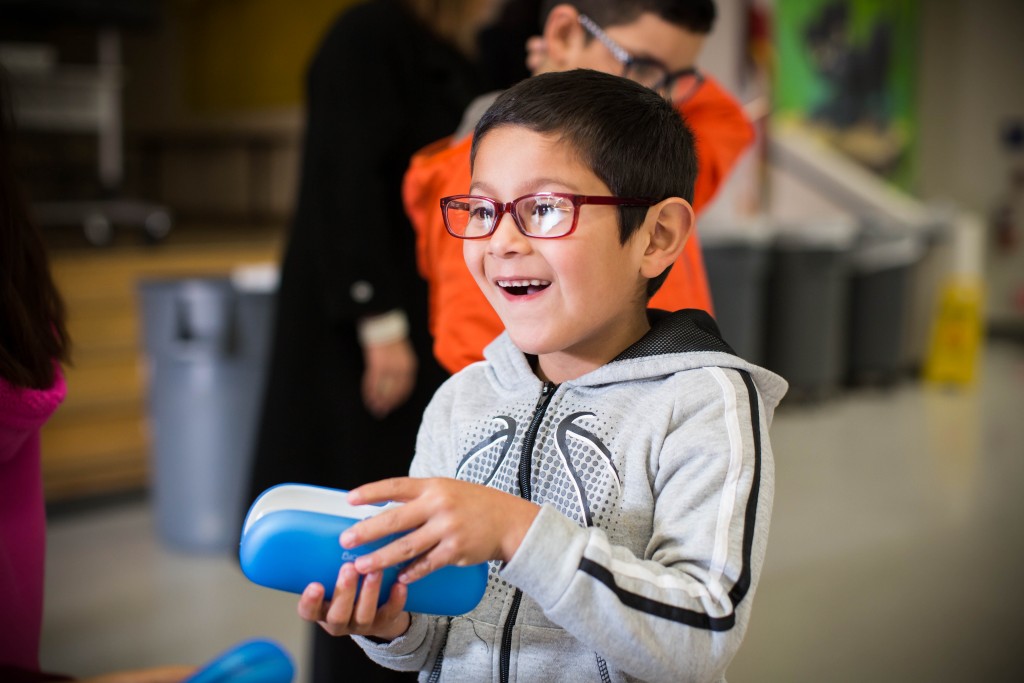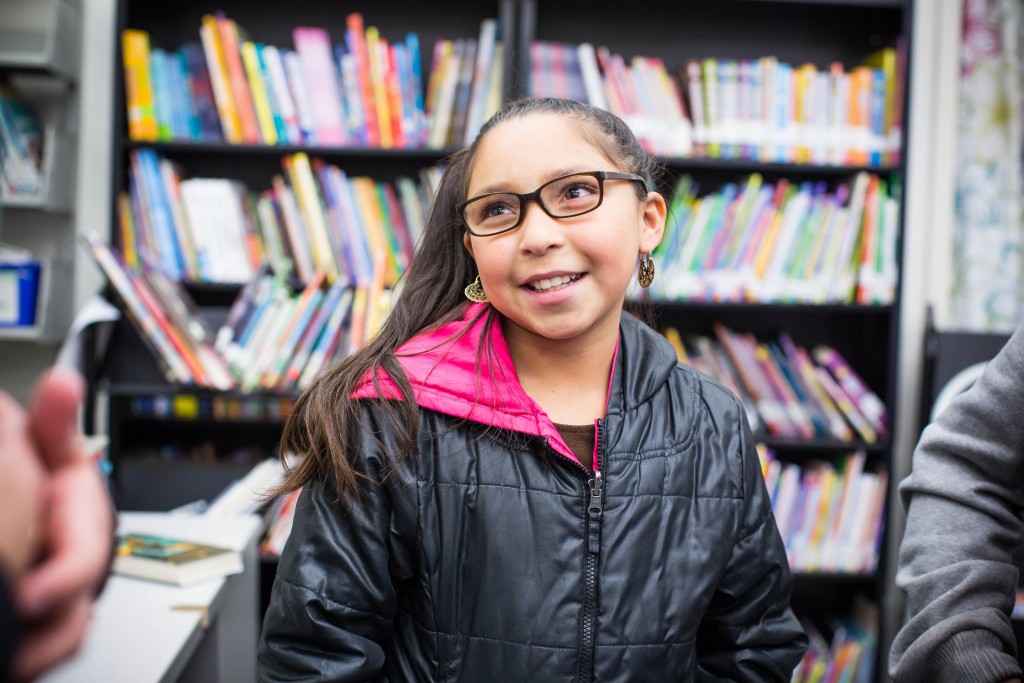How can a student learn to their potential if they can’t see clearly? Research shows that clear vision empowers students to be twice as effective in school[1]. Without clear vision, a child cannot learn and live to their full potential.
In the United States, 13.4 million school-aged children have vision problems, yet one in four students with a problem significant enough to impair their academic performance go undiagnosed[2]. That’s in part because 35 percent of school-aged children have never seen a vision care professional[3], and 40 percent of those who fail a vision screening don’t receive follow-up care[4].
Thousands of school-based health programs around the country provide health care services to students and their families; however, many are not yet equipped to provide vision care services. Together, we can do something about this.
Last fall, OneSight launched the Focus on Sight program to provide permanent year-round access to vision care and glasses for underserved students and their families. In partnership with the School-Based Health Alliance, OneSight helps to integrate vision care into school-based health programs by providing grants and vision care expertise. Grants are awarded through an application process and grantees are selected based on their history of managing a school-based health center, their focus on sustainability, and the need within the community they are serving.
OneSight is thrilled to announce the five partners to receiving 2017 grants for school-based vision centers (SBVC):
- Albany Area Primary Healthcare’s program at Alice Coachmen Elementary School in Albany, GA
- La Clinica de la Raza’s program at Youth Heart Health Center in Oakland, CA
- Advanced Center for Eyecare’s program serving the Delano Union School District in Delano, CA
- Cincinnati Health Department’s program at the Academy of World Languages, in Cincinnati, OH
- Community HealthNet’s program at Calumet High School in Gary, IN
“Access to vision care and a pair of glasses is critical to a student’s ability to learn and there is no better feeling than helping a child reach their full potential,” said Mony Iyer, Executive Director, OneSight. “These first grant recipients are leading the way as we continue to pursue our goal of making sure that every child in the US has access to an eye exam and a pair of glasses.”
By the end of 2018, 15 OneSight school-based vision centers will be open providing nearly 500,000 students and their families with access to vision care and glasses.
To learn more about the OneSight Focus on Sight program and how you can help make an impact, visit www.onesight.org/focusonsight.
[1] Rural Education Action Program
[2] 4 Kleinstein, RN et al. Refractive error and ethnicity in children. Arch Ophthalmol 2003; 121:1141-11
[3] The Vision Care Institute. Americans’ Attitudes and Perceptions about Vision Care. Conducted by Harris Interactive on behalf of The Vision Care Institute™ of Johnson & Johnson Vision Care, Inc., 2006
[4] Donohue SP, Johnson TM, Leonard-Martin TC. Screening for amblyogenic factors using a volunteer lay network and the MTI photoscreener. Ophthalmol 2000;107:1637–44. 8 Preslan MW and Novak A. Baltimore vision screening project. Phase 2. Ophthalmol 1998;105(1):151–153

